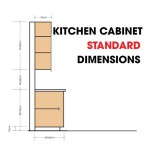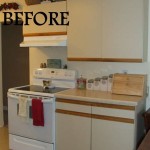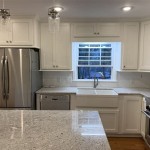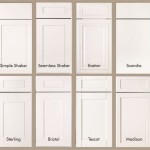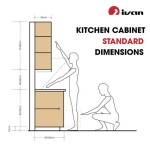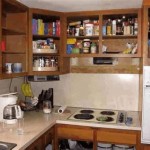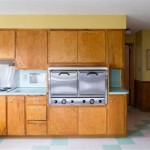How Much Space Between Kitchen Cabinets And Wall
When designing or renovating a kitchen, ensuring proper spacing between cabinets and walls is crucial for functionality, aesthetics, and safety. The ideal distance is not arbitrary and depends on a number of factors, including cabinet type, wall features, and personal preferences. This article explores the recommended spacing for different kitchen cabinet types, discusses the benefits of adhering to these guidelines, and provides practical tips for achieving optimal results.
Standard Spacing Recommendations
The majority of kitchen cabinet manufacturers and professional designers recommend specific spacing guidelines to achieve the desired balance between functionality and aesthetics. Generally, the minimum space between a wall and a base cabinet should be at least 1.5 inches (3.8 cm) to allow for access to the wall for cleaning and maintenance. For upper cabinets, the recommended minimal space is 18 inches (45.7 cm) to ensure sufficient headroom and prevent bumping your head.
However, these are just general guidelines, and the ideal spacing may vary depending on the specific design choices and the overall layout of your kitchen. For example, you might need more space for a larger appliance like a refrigerator or a dishwasher, or for certain features like a window or a doorway.
Benefits of Proper Spacing
Adhering to the recommended spacing between kitchen cabinets and walls yields several benefits:
Enhanced Functionality
Proper spacing allows for easy accessibility to cabinets, appliances, and wall outlets. This is particularly important for base cabinets, as it provides room for cleaning beneath and around them, as well as for accessing the wall for repairs or installations. For upper cabinets, adequate spacing ensures that you can easily access the shelves and retrieve items without hitting your head or bumping into the wall.
Improved Aesthetics
Balanced spacing creates a more visually appealing and harmonious appearance in the kitchen. A well-proportioned kitchen with sufficient space between cabinets and walls feels spacious and inviting. In contrast, cramped spacing can make the space appear cluttered and disorganised.
Safety and Accessibility
Adequate spacing promotes safety and accessibility. For instance, sufficient clearance around base cabinets prevents tripping hazards and ensures easy mobility for people with disabilities. Similarly, enough space above upper cabinets reduces the risk of head injuries, especially for taller individuals.
Factors Influencing Spacing
The ideal spacing between cabinets and wall can be influenced by several factors:
Cabinet Type
The size and type of cabinets can affect the necessary spacing. Large or deep cabinets may require more clearance than smaller ones. Drawer units, for example, may need more depth to allow for full extension, while cabinets with doors may require less clearance.
Wall Features
Existing features on the wall, such as outlets, switches, and windows, will also influence the required spacing. Ensure that cabinets are positioned so that they do not obstruct these features or make them inaccessible. In cases where the wall features are close to the intended cabinet location, adjustments to the spacing may be necessary.
Appliance Placement
The placement of appliances like refrigerators, dishwashers, and ovens is another critical factor. These appliances often require additional clearance for proper functioning and maintenance. For example, a refrigerator needs enough space to open its doors fully and for ventilation.
Layout and Design Considerations
The overall layout and design of your kitchen should also be considered when determining the spacing between cabinets and walls. A well-designed kitchen will have a balanced and functional layout that optimizes the use of space, while also considering ergonomic factors and aesthetic preferences.
Planning and Measurement
Prior to installing or ordering cabinets, it is crucial to measure the available space carefully and plan the layout accordingly. Consider using a professional kitchen designer or a computer-aided design (CAD) program to create a detailed plan that includes the required spacing.
Accurate measurements and careful planning ensure a harmonious and functional kitchen design that optimizes space and creates an enjoyable and safe environment for cooking, dining, and entertaining. By following the recommended guidelines and considering the specific factors involved in your kitchen, you can achieve the perfect balance between functionality and aesthetics.
How High Should Kitchen Cabinets Be From The Countertop Quora

Height Between Upper Cabinets And Counters Kitchen Elevation
Setting Kitchen Cabinets 41 Lumber Serving Iron Mountain And The U P

What Gap Do I Need Between The Worktop And Bottom Of Wall Units

Kitchen Design Tips Part 2

Best Practices For Kitchen Space Design Fix Com

How High Upper Cabinets Should Be From Your Floor And Countertop

The 39 Essential Rules Of Kitchen Design

Using Diffe Wall Cabinet Heights In Your Kitchen

Six Clever Strategies To Use Space Over Wall Cabinets
Related Posts

